| Umělec 2003/3 >> PECULIARITIES OF THE NATIONAL HUNT | Просмотр всех номеров | ||||||||||||
|
|||||||||||||
PECULIARITIES OF THE NATIONAL HUNTUmělec 2003/301.03.2003 Veronika Drahotová | news | en cs |
|||||||||||||
|
"The invitation to Finland came at just the right time. The gloomy days at the end of November writing grants and solving operational problems in the gallery provided me with a much needed vision for a lighter horizon. The goal of my four-day trip was to choose artists for an exhibition of contemporary Finnish art and to take the first steps towards ensuring long-term cooperation on both sides. I spent seventeen hours in the car, traveled through the southern and south-eastern part of Finland (Pirkama and South Savo) and grew more enthusiastic every hour and I admired the country even more after becoming acquainted with their state grant
system. Many young Finnish artists live outside the main part of the city, often in far-lying neighborhoods, but because of the many grants and scholarships art professionals are able to make a living. Finland is divided into thirteen regions and each of them has its own Art Council, supporting all the artistic branches in the region. The region is subsidized by the state, by the Ministry of Education, and except for a yearly report it has complete autonomy. The nine members of the council, some of them artists, hand out the grants. There is a working scholarship for three to twelve months (one month — 1100 Euro) which enables the artists to concentrate on their own work, and a scholarship for a direct realization of projects (material, exhibition or a catalogue). In the region of South Savo they award 12 working and 19 realization grants. Except for a few private galleries in Helsinki, most of them belong to the state; the town and the Association of Artists run the gallery and the artists rent the space. But this doesn’t mean that everyone with money can exhibit. The associations check the quality of the projects, and they choose and put together a yearly program. Nearly every mid-size city has its own art association. Gallery Rajatila in Tampere One example is the gallery Rajatila, run by the Association of Young Artists. During my visit I saw the exhibition BARDO by two graduates from the local university, Tomas Regan (1979) and Tero Malinen (1979). A yogic slowness and sensitivity, at times even overly sensitive, was the last thing I had expected from the Finns. “Bardo” is the Buddhist term for the transition state between death and a future rebirth, but it also means the immersion of the mind or being in a dream state. Tomas Regan’s drawings comment on the states of dreaming. The most distinct was an intentionally rigid pastel of a life-sized horse. Random black and white photocopies of a girl lying or sleeping in fall leaves were also hanging around. A black charcoal drawing of a boy and a man was directly on the gallery wall. In the two-minute video Emansipatio (Emancipation) two men wearing historical costumes play catch in a forest, both holding the attributes of power (a sword and a flag). Tero Malinen’s “skateboard-spiritual” video titled Experiment was a different look at heroism. To the sound of chanting Tibetan monks the artist skateboards along a long rail, falling badly with nearly every attempt. In five minutes and 36 seconds he manages to cut his chin and bruise both knees. The Museum of Art in Mikkeli Mikkeli is the capital of the region South Savo, and in the museum is a permanent exhibition of 20th century art and also a space reserved for smaller contemporary art projects. Definition Landscape will be there until February. Curators Pilvi and Mikko Kalhama tried to resuscitate the landscape as a nearly extinct theme in contemporary art. If the landscape was its own art form in the past, nowadays it should be understood as a concept. The landscape is becoming more of an open field of interpretation than a mere visual element. This exhibition of seven young Finnish artists was conceived in more conceptual levels and not just spatial description. Veronika Drahotová "
01.03.2003
Рекомендуемые статьи
|
|||||||||||||
|
04.02.2020 10:17
Letošní 50. ročník Art Basel přilákal celkem 93 000 návštěvníků a sběratelů z 80 zemí světa. 290 prémiových galerií představilo umělecká díla od počátku 20. století až po současnost. Hlavní sektor přehlídky, tradičně v prvním patře výstavního prostoru, představil 232 předních galerií z celého světa nabízející umění nejvyšší kvality. Veletrh ukázal vzestupný trend prodeje prostřednictvím galerií jak soukromým sbírkám, tak i institucím. Kromě hlavního veletrhu stály za návštěvu i ty přidružené: Volta, Liste a Photo Basel, k tomu doprovodné programy a výstavy v místních institucích, které kvalitou daleko přesahují hranice města tj. Kunsthalle Basel, Kunstmuseum, Tinguely muzeum nebo Fondation Beyeler.
|






















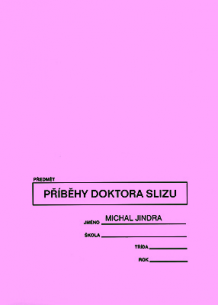




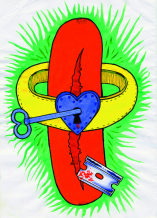
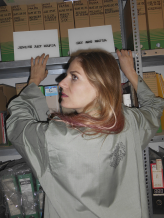
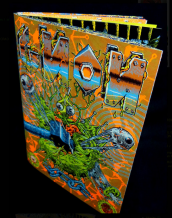
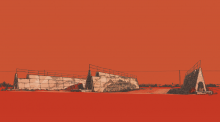


 We Are Rising National Gallery For You! Go to Kyjov by Krásná Lípa no.37.
We Are Rising National Gallery For You! Go to Kyjov by Krásná Lípa no.37.
Комментарии
Статья не была прокомментированаДобавить новый комментарий